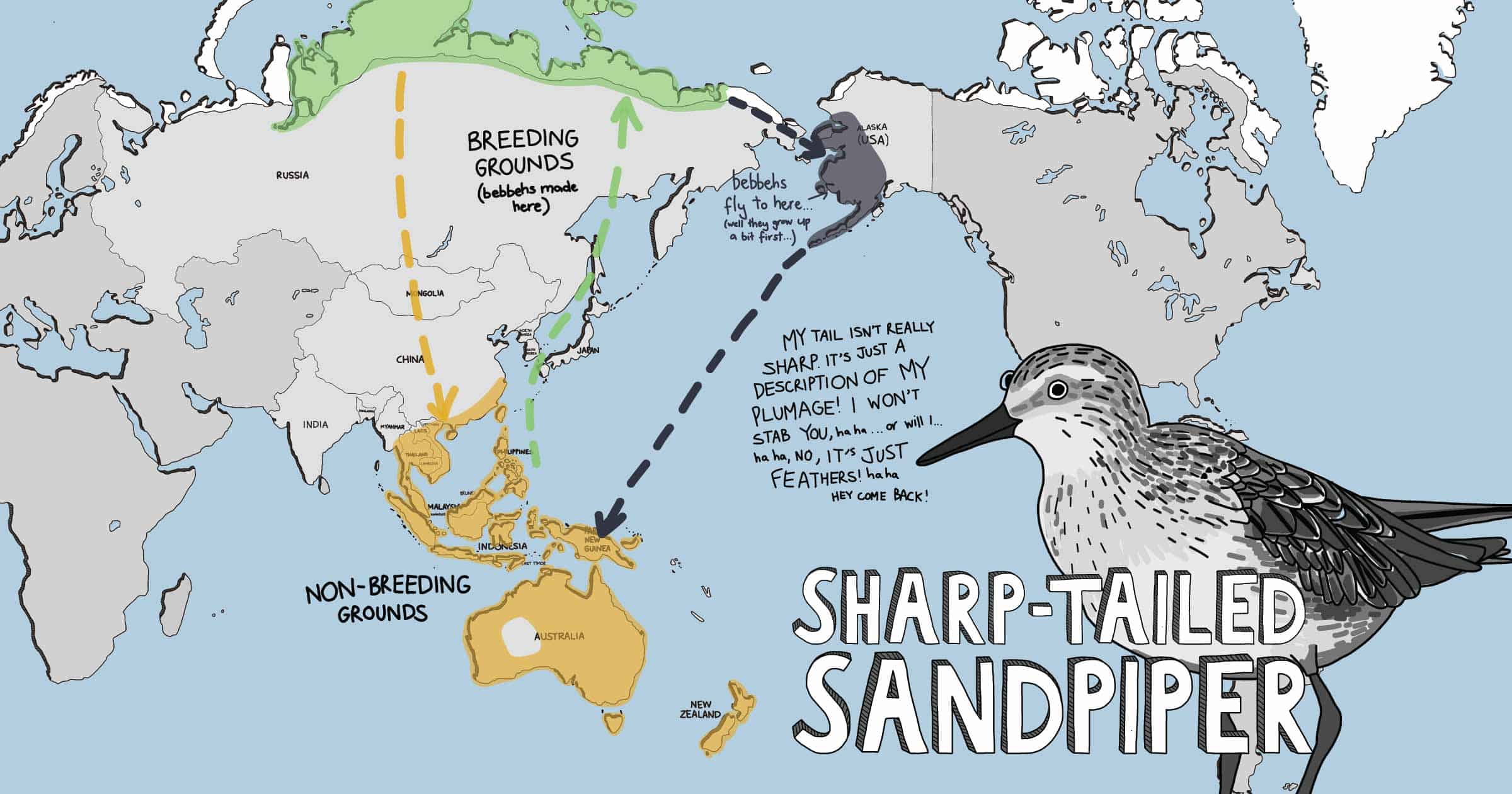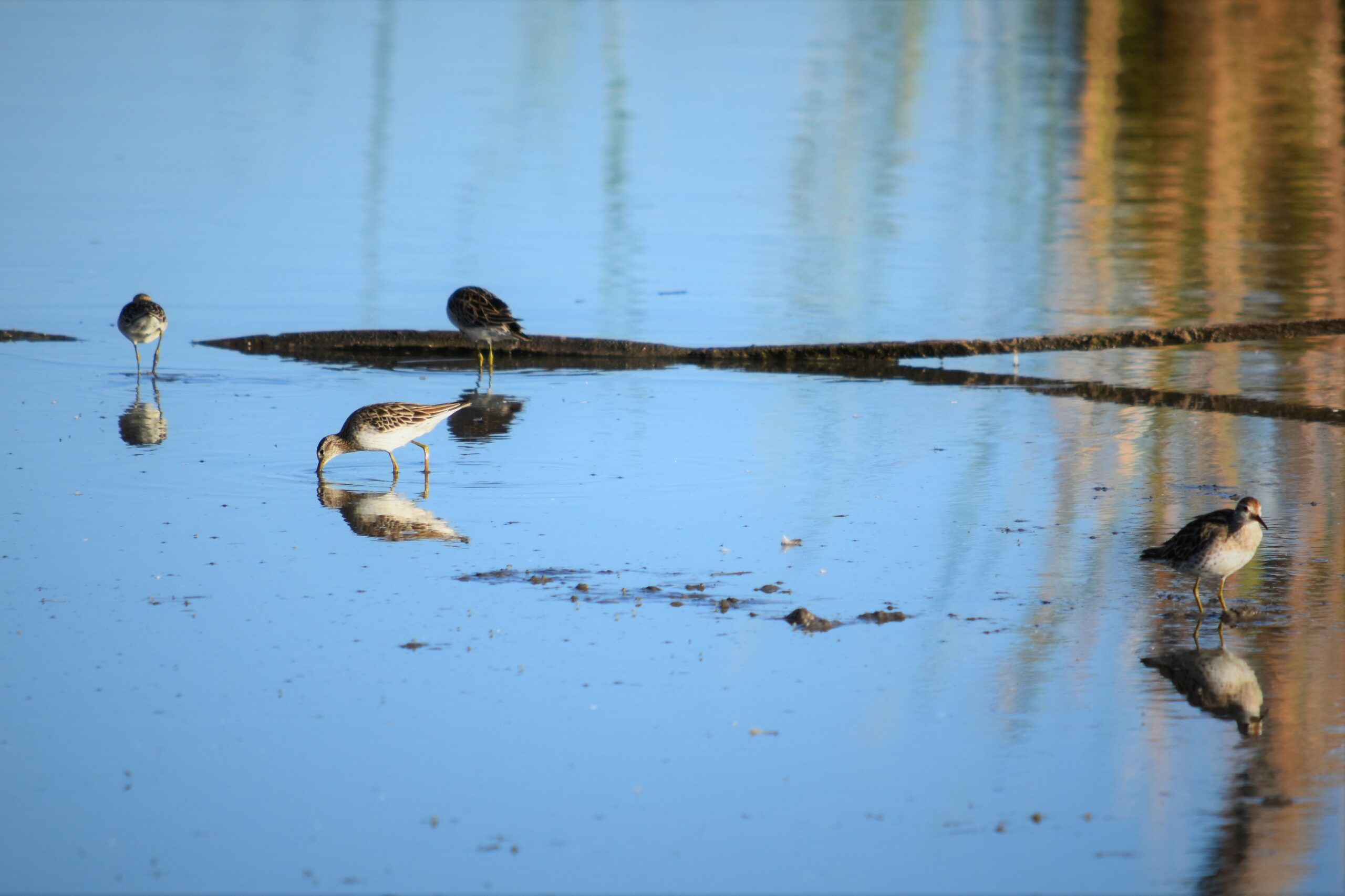The Commonwealth Environmental Water Holder’s (CEWH) Science Program funds the Flow Monitoring, Evaluation and Research (Flow–MER).
We acknowledge the Gomeroi/ Gamilaroi/ Kamilaroi/ Gamilaraay Peoples, the Traditional Owners of the Guwayda (Gwydir) River and surrounds. Thank you for sharing your Country and knowledge of the land, water and life with us. We pay respects to Elders past and present.
Traditional Gamilaaraay Language of the Gomeroi Nation used in this article (H. White & B. Duncan – Speaking Our Way, M. Mckemney), enhanced through working with community members and Kerrie Saunders and Liz Taylor the Guwayda (Gwydir) River Selected Areas Cultural Advisors.

The sharp-tailed sandpiper (Calidris acuminata) is a small-medium wader weighing about 65 g. This little bird is a long-distance traveller. It breeds in northern Siberia, before migrating across Asia and North America (Figure 1). During the non-breeding season, the sharp-tailed sandpiper spends its time in Australia, and in small numbers in New Zealand. Sharp-tailed sandpipers prefer the muddy edges of shallow fresh or brackish wetland habitats, with inundated or emergent sedges, grasses, saltmarsh or other low vegetation.
They forage along the edge of the water for seeds, worms, molluscs, crustaceans and insects (Figure 2). Commonwealth water for the environment accounts for the presence of these and other wader species and provides enough water down the system to create feeding habitat.

Like many birds that complete international migration, the sandpiper faces several threats. These include habitat loss and degradation, reduction in water quality and quantity, human disturbance, global warming and even hunting in China. Commonwealth water for the environment assists in providing feeding grounds for these vulnerable listed shore birds as they spend their time in Australia.
Managing water for the environment is a collective and collaborative effort, working in partnership with communities, private landholders, scientists and government agencies – these contributions are gratefully acknowledged.
We acknowledge the Traditional Owners of the land on which we live, work and play. We also pay our respects to Elders past, present and emerging.


